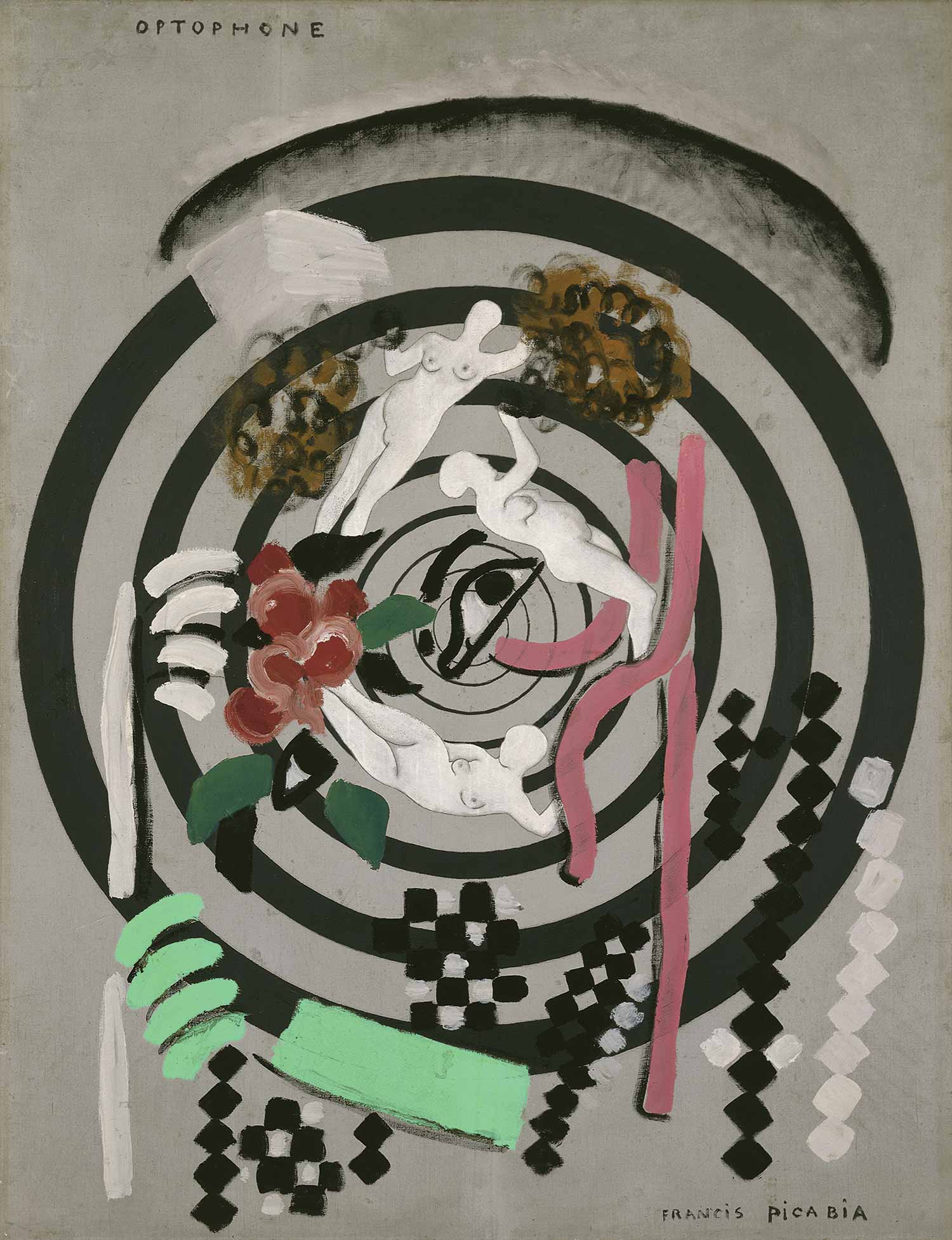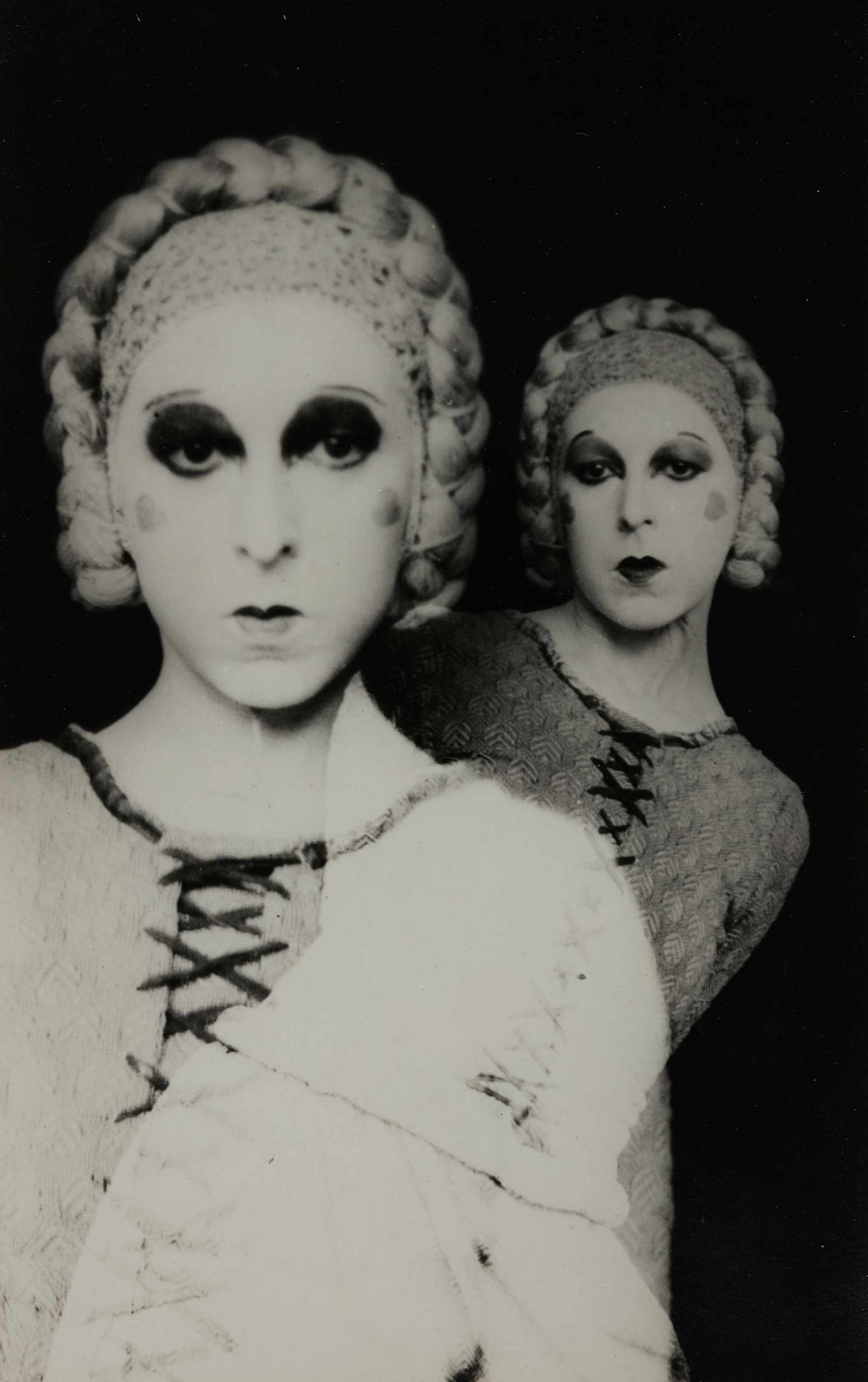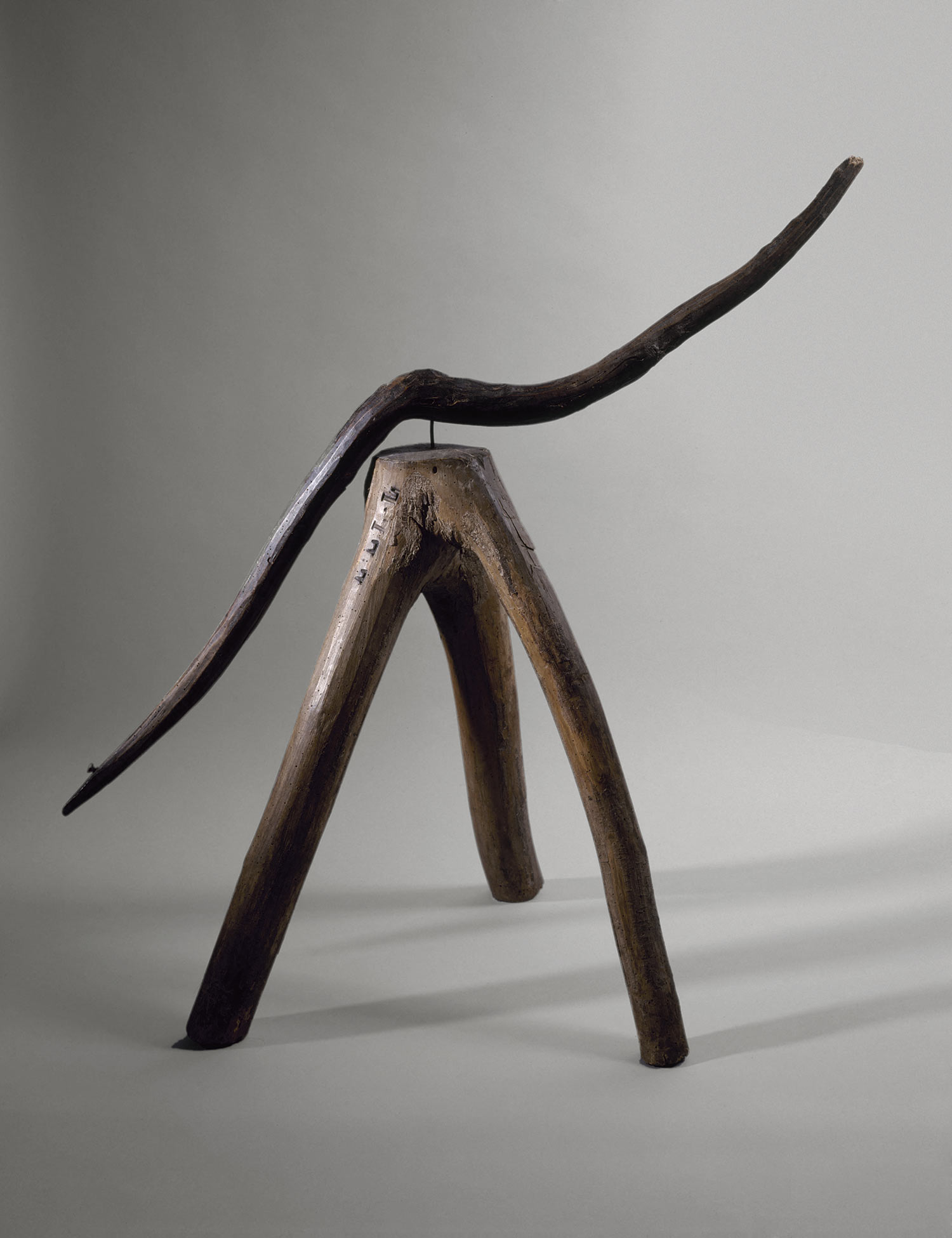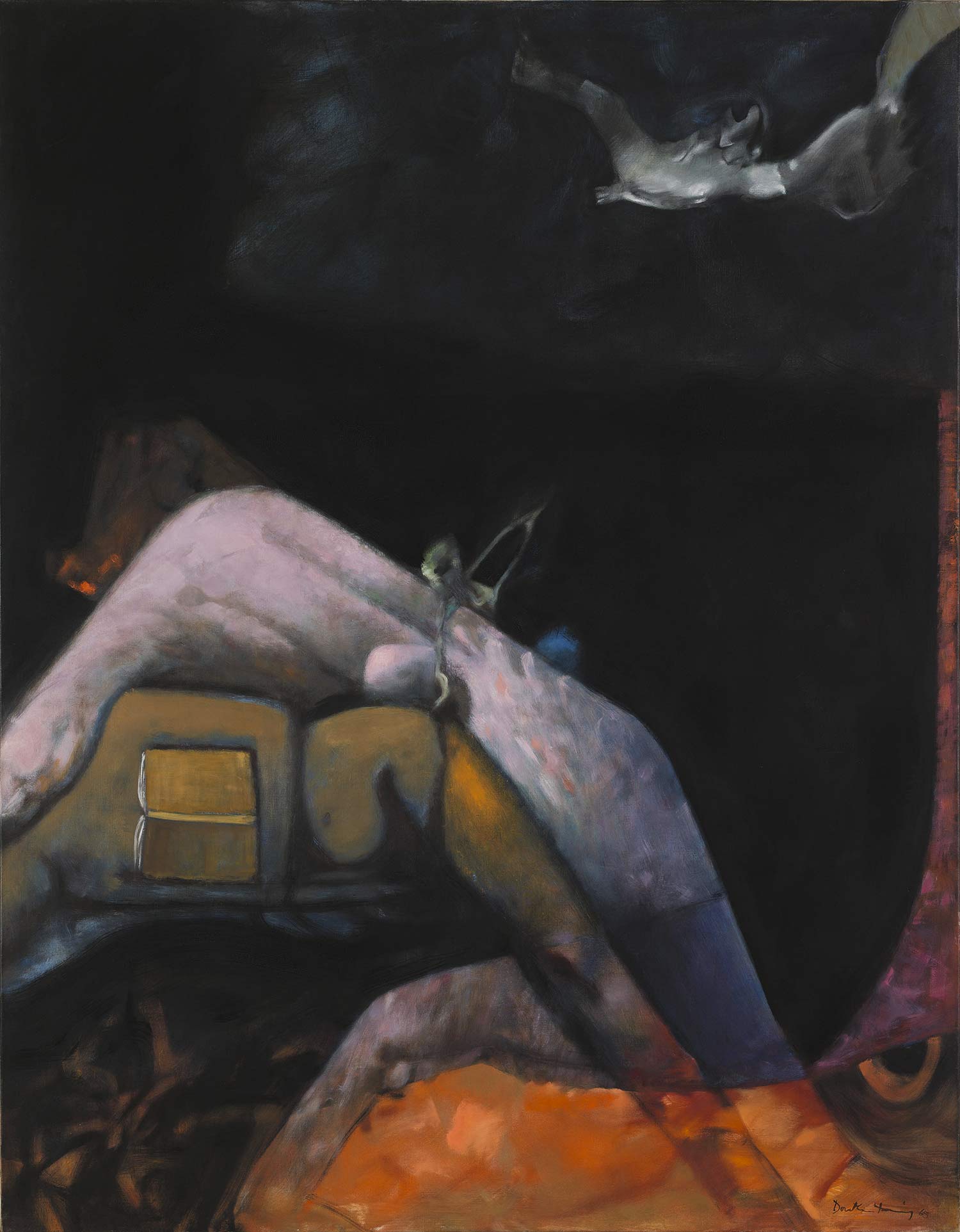Evolutions of Surrealism
GALLERY 307
Surrealism was born in Paris in the 1920s from the writings of the poets Guillaume Apollinaire, André Breton, Louis Aragon, Philippe Soupault, and Paul Eluard. In a postwar context, this artistic and literary movement was formed with the desire to overturn the values of order and reason, as well as illustrate the necessity of re-enchanting the world. Breton, the theorist of this group, laid the foundation of a new aesthetic statement drawing on new inspirations, including Freudian theories and psychoanalysis, myths and symbols, the unconscious, dreams and their manifestations, attraction for the marvelous, and chance and divination.
This movement was integrated across all fields of artistic creation and heralded new artistic and technical inventions. Artists such as Man Ray, Breton, and Max Ernst embraced fruitful interplays between reality and transfiguration as evident in their works in this section. Other Surrealist artists on view, such as Victor Brauner and Francis Picabia, fused different images together and new themes were developed that hovered between esotericism and symbolism, allowing artists such as Claude Cahun, Prinner, and Brauner to experiment with notions of androgyny and gender fluidity.
Surrealism championed the irrational, the revolutionary, and the liberation of the mind. The ideas associated with the movement developed over several decades and were disseminated, embraced, and re-imagined through international networks of exchange. Artists like Wifredo Lam, Vera Pagava, and Leonor Fini, for example, investigated aspects of totemism, revived antiquity, and symbolism tinted with archaism in their works, respectively. Other artists, like Breton, Ernst, André Masson, and Roberto Matta left Europe for New York, where they discovered the effects of Surrealism in the United States at Peggy Guggenheim’s gallery, Art of This Century. After the end of World War II, Surrealism was still very much present in Paris, where artists from the group blended with new generations. Since its opening in 1961, the collections of the Musée d’Art Moderne de Paris reflect the evolutions of this historical movement.




